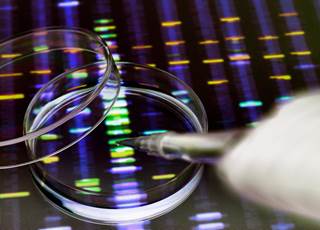
The overlapping phenotypes of many hereditary anemias can make differential diagnosis and classification very difficult,
Multigene targeted next-generation sequencing (t-NGS) may help provide accurate diagnoses and guide the development of better treatment for patients with hereditary anemias, according to a study published in the American Journal of Hematology.
Hereditary anemias comprise a highly heterogeneous group of rare or low-frequency disorders that often display overlapping phenotypes, makes accurate diagnosis and classification difficult. Clinical and biochemical tests sometimes return uninformative or unclear data. NGS offers an alternative diagnostic tool by conducting disease-targeted tests for which multiple causal genes are already known.
In this study, researchers enrolled 74 patients from 62 unrelated families who were clinically suspected of having different types of hereditary anemias. Specifically, 15 patients were clinically suspected of erythrocyte membrane defects; 20 patients were clinically suspected of hereditary stomatocytosis; 4 patients were clinically suspected of Diamond-Blackfan anemia; and 35 patients were clinically suspected of congenital dyserythropoietic anemias (CDA). The researchers developed and used 2 multigene t-NGS panels to analyze the patients: RedPlex_rev.0, which targeted 34 causative or candidate genes, and RedPlex_rev.1, which targeted 71 such genes.
The 2 multigene panels provided a conclusive diagnosis for 64.9% (48/74) of patients overall, with 35.1% (19/74) of patients not receiving a conclusive diagnosis. Of the patients who were conclusively diagnosed, the clinical suspicion was confirmed in 54.2% (26/48) of the patients, while 45.8% (22/48) of the patients received a diagnosis that did not match the clinical suspicion.
Of note, 81.8% (18/22) of patients whose conclusive diagnosis did not match the clinical suspicion were originally suspected of having CDA. Additionally, several patients suspected of having CDA demonstrated mutations in PIEZO1 (the causative gene of dehydrated hereditary stomatocytosis [DHS1]), PKLR (the causative gene of pyruvate kinase deficiency), and CAD (a gene involved in pyrimidine biosynthesis).
The gene panels also revealed that a patient who was originally suspected of having DHS1 showed causative mutations for DHS1 and CDAII. These 2 genotypes had an additive effect and resulted in a clinical picture suggestive of DHS1 but with marked iron overload, high ferritin levels, and increased transferrin saturation.
The authors of the study noted that this study included “the largest cohort of patients and the most comprehensive gene set for this subset of anemias described so far.” They concluded that “multitarget sequencing diagnosis may be valuable not only for achieving a correct and definitive diagnosis, but also for guiding treatment.”
Reference
- Russo R, Andolfo I, Manna F, et al. Multi-gene panel testing improves diagnosis and management of patients with hereditary anemias [published online February 3, 2018]. Am J of Hematol. 2018;93:672-682. doi: 10.1002/ajh.25058
No comments:
Post a Comment